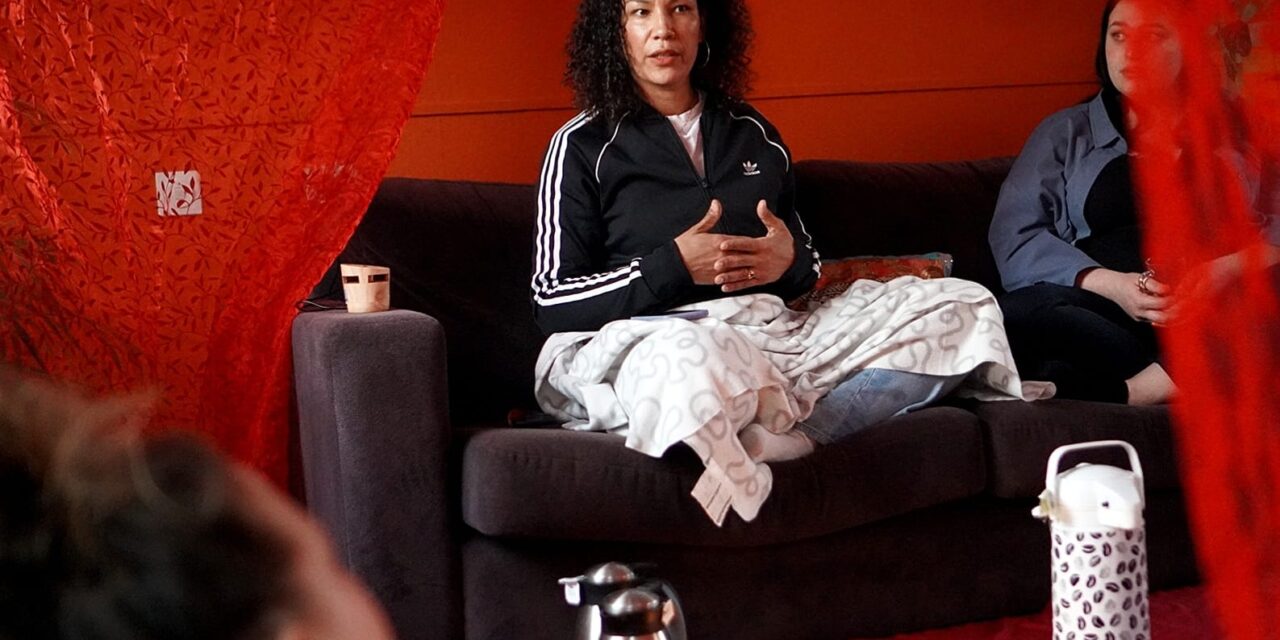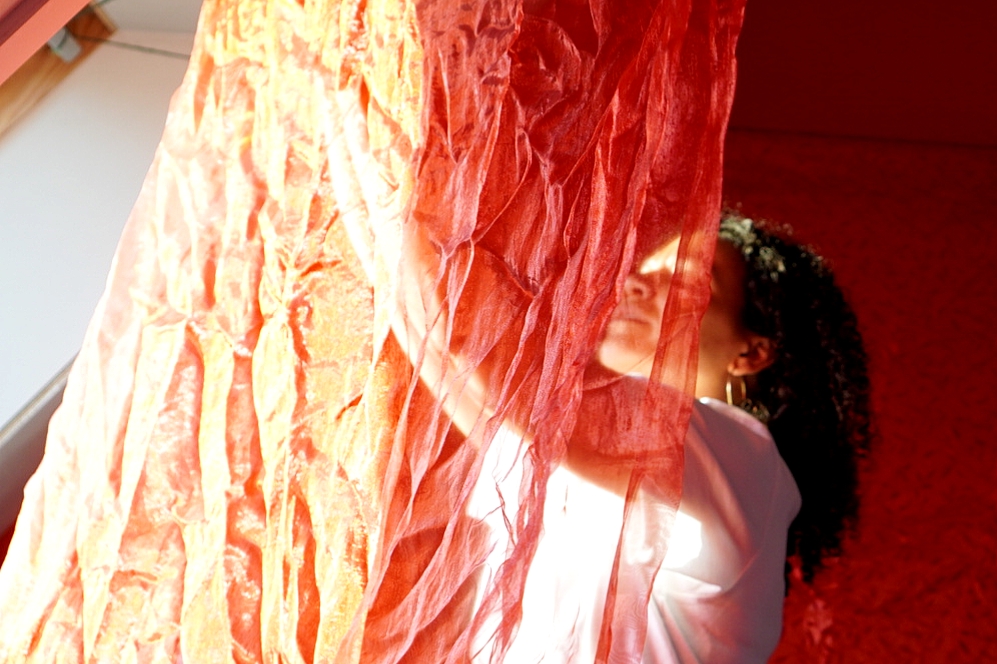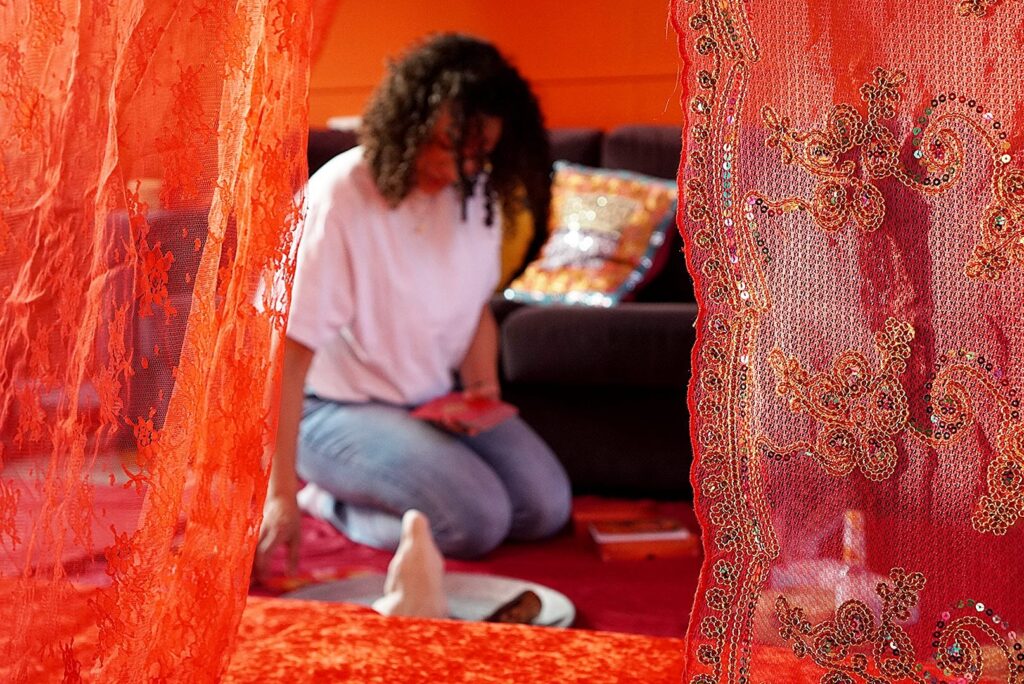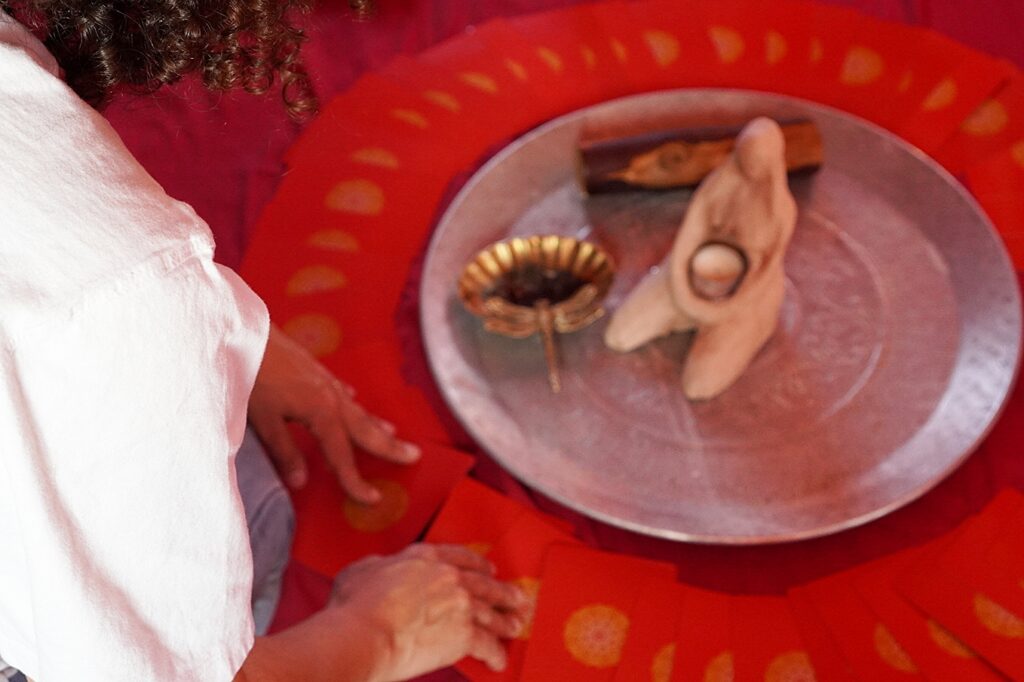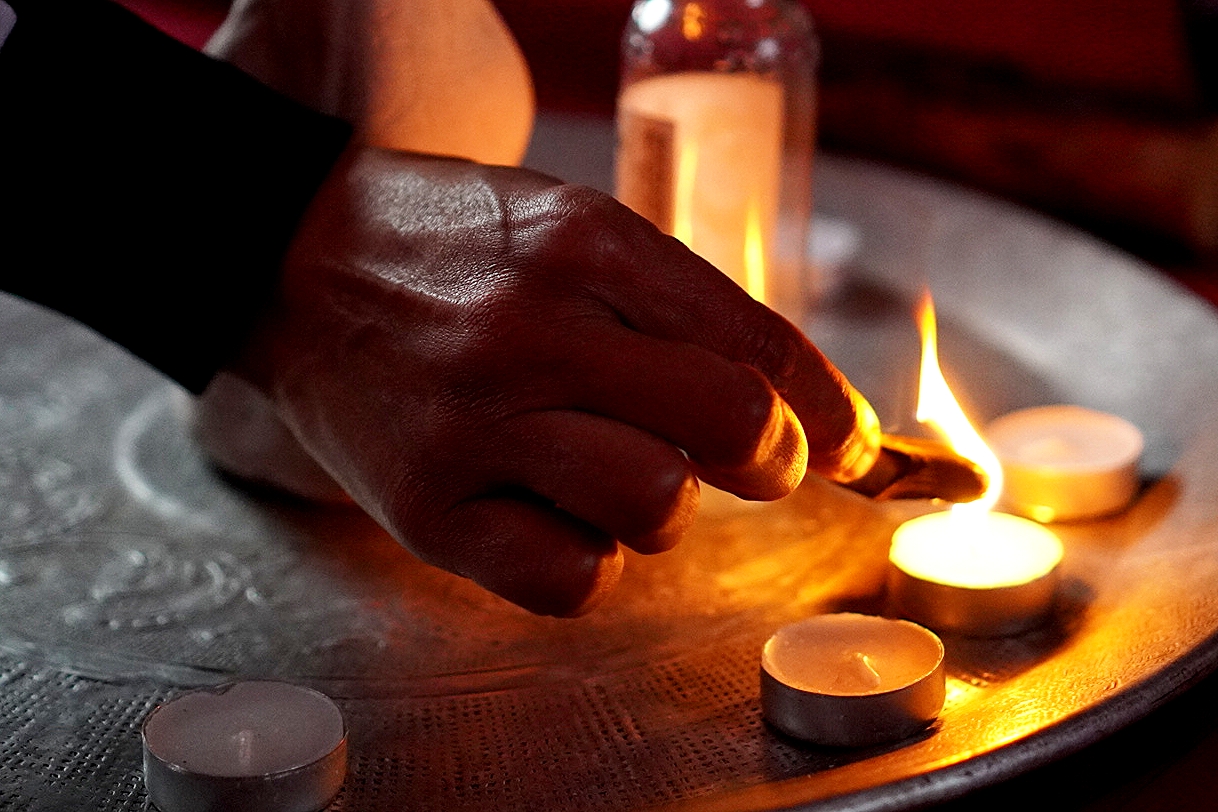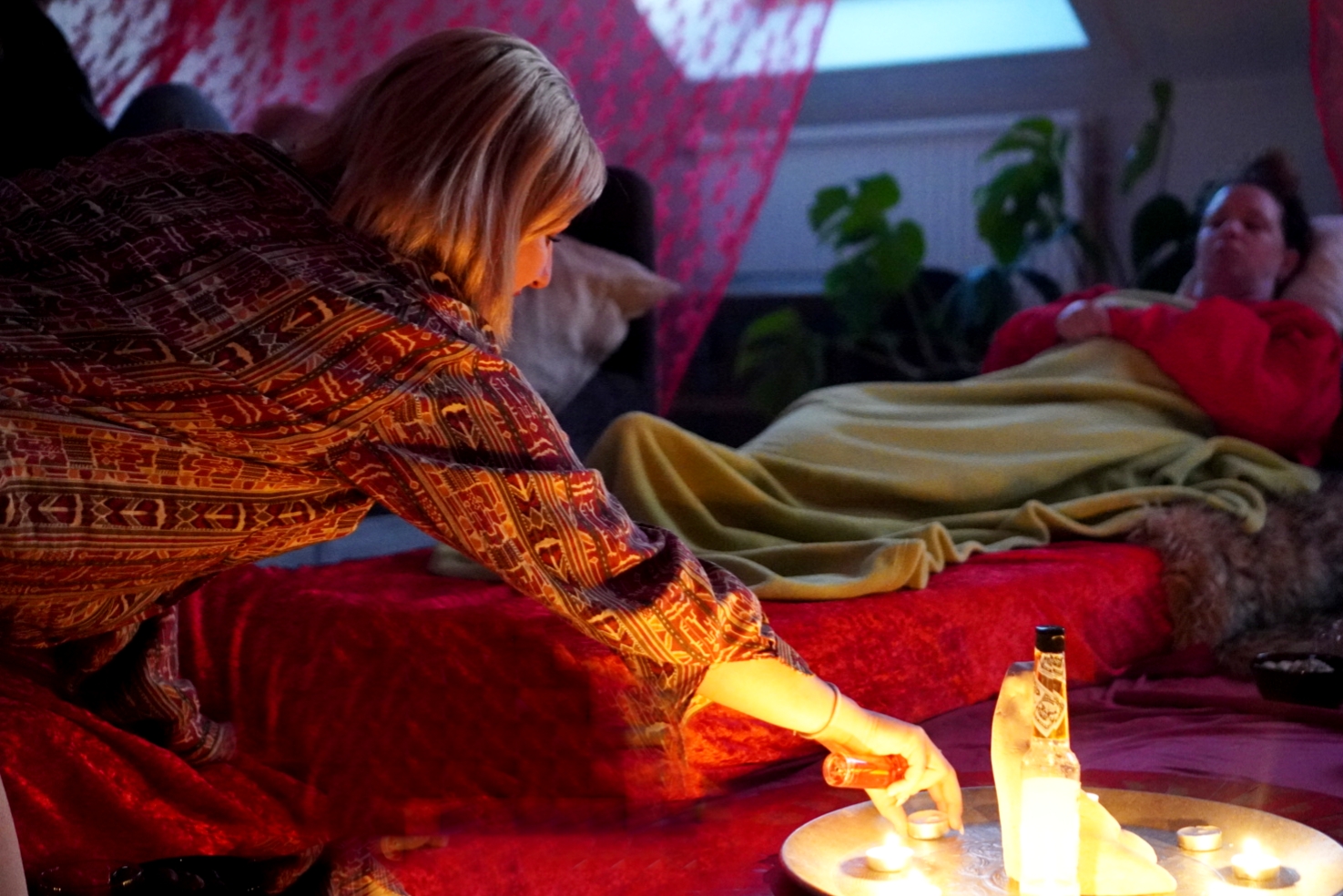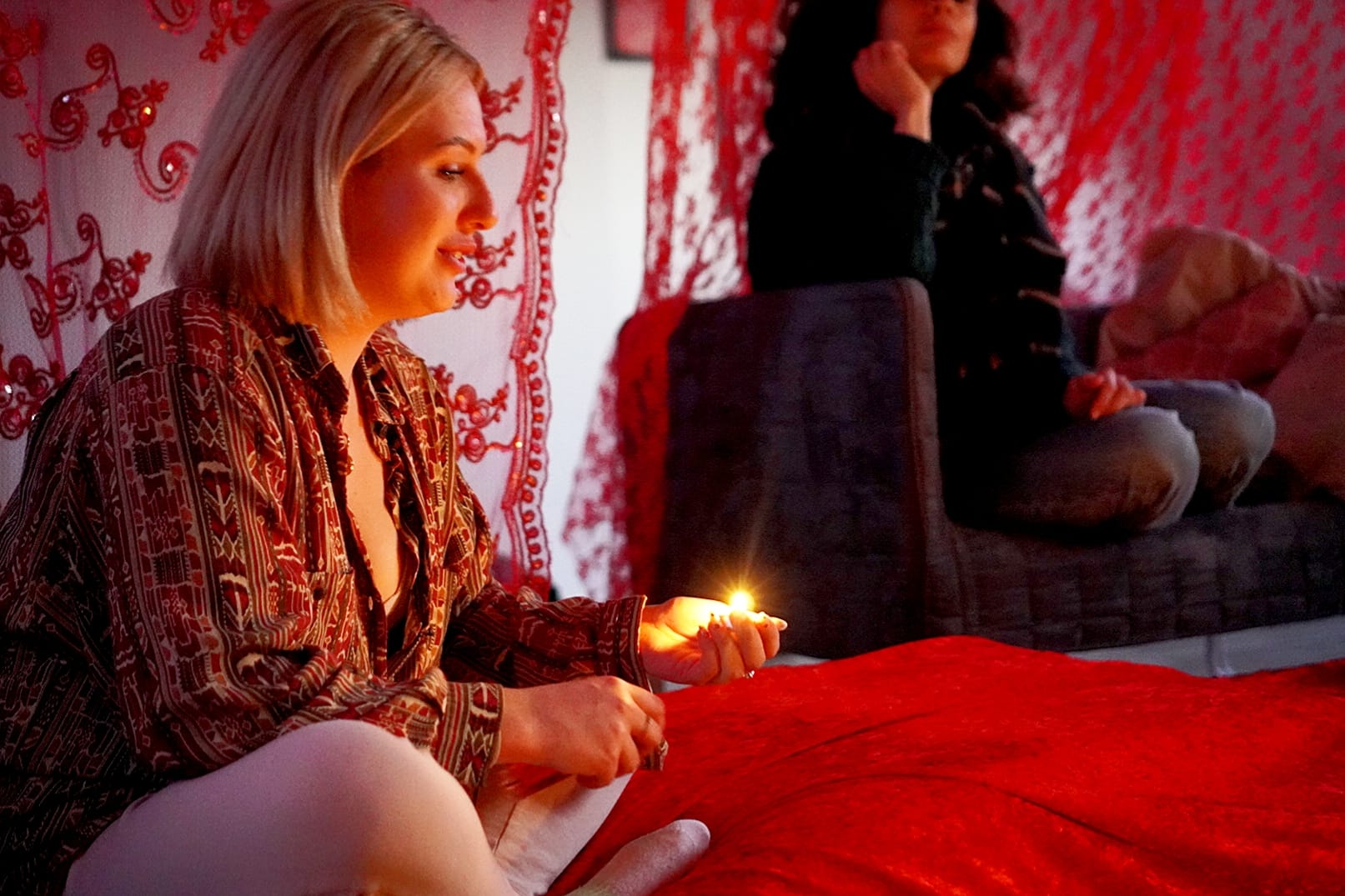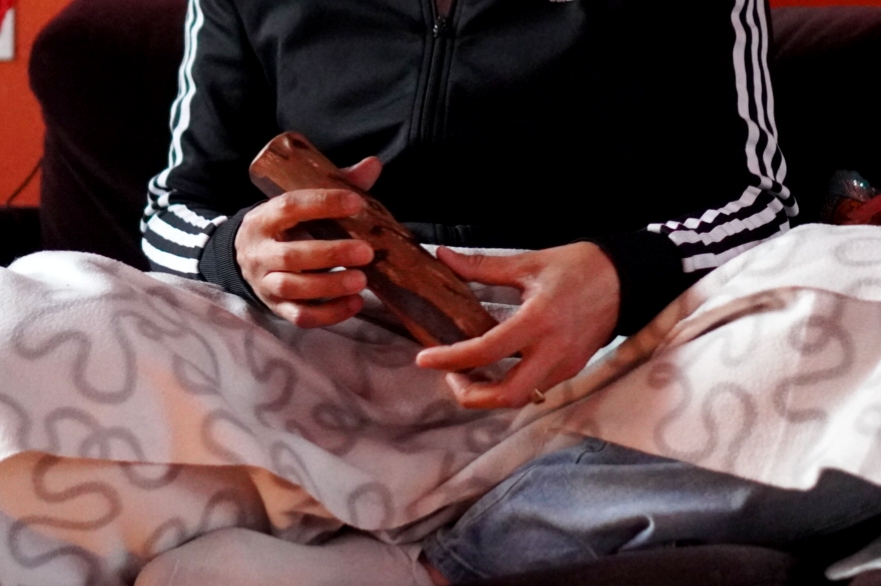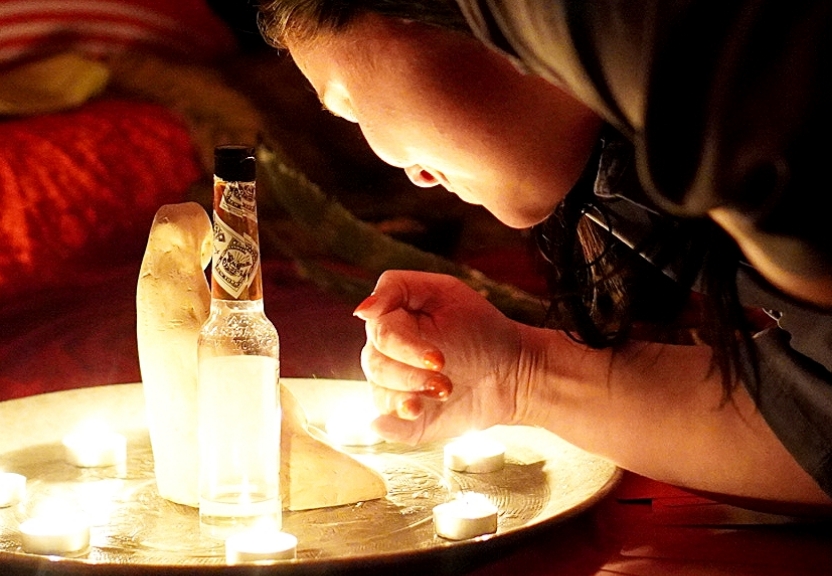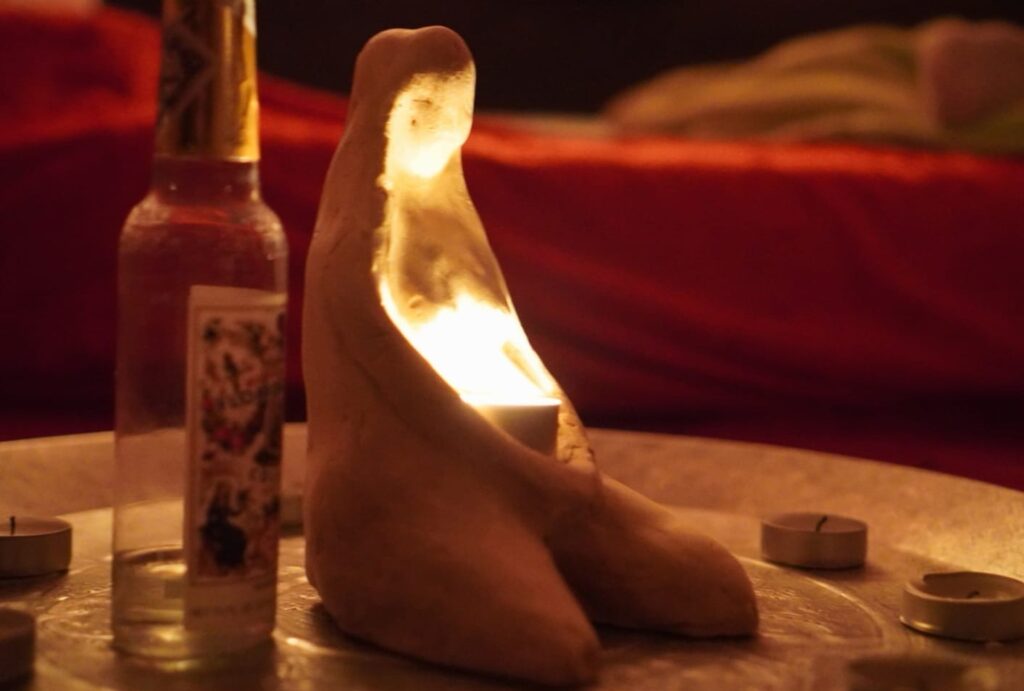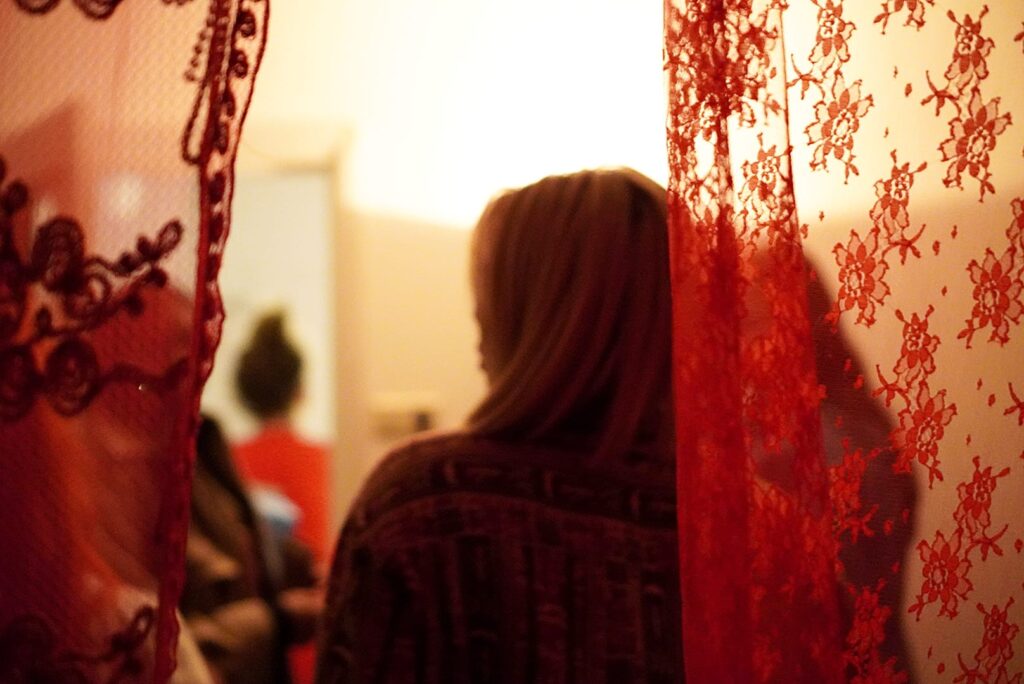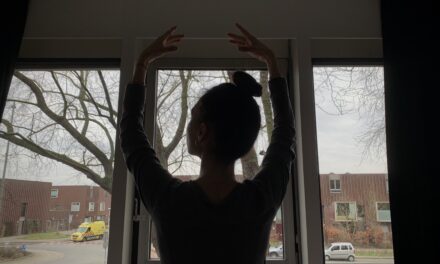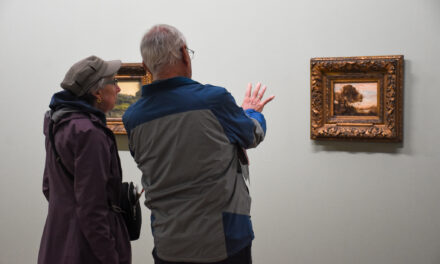A safe space for women to feel connected with each other and to share their stories and feelings. The history of women’s circles has their roots from a variety native cultures. Many of these rituals were tied to the phases of the moon, nature, spirits, seasons, and menstruation. Nowadays, women’s circle are more on the rise because women want to be feel more empowered.
The evening is led by Rosa Balrak. She is as a spiritual practitioner and educated in Inca-shamanism (A healing tradition from the Inca’s that connects spirituality and nature, ed). Rosa welcomes me with a smile on her face, in a building in a picturesque neighbourhood in Utrecht. Strokes of the sun give her a sparkle in her eyes. Going upstairs, red cloths are forming the circle. The smell and clouds of sage fill the room. Ready for an evening that heals and brings women back to their origin. “According to me, the origin from woman is listening to their bodies and being connected with their own feelings. In the woman’s circle they learn to take themselves seriously. Thus their inner voice leads to take their own course through life and own wisdom.”
The red tent
“In Native-America, these early circles were spaces of empowerment and enlightment, where women would often gather in red tents while menstruating to honor their bodies. The red tent grew in popularity as a sacred space for women and girls to affirm their spirituality and sexuality and to heal from the wounds of society”, explains Rosa.
A 2017 study on Women’s Circles and the Rise of the New Feminine by the Centre of Research on Culture and Gender at Ghent University confirmed the draw of women’s circles, saying, ‘Women’s circles seem to appeal to a variety of women, both those who had lived in more ‘traditional’ feminine roles, due to either their generation, personal, cultural, class or religious upbringing, and those who had walked the modern gender liberal (or postfeminist) route towards ‘having it all’ (autonomy, achievement and/or personal fulfillment and professional success).’
It’s the end of the circle. The atmosphere is way lighter than before. Some of the women are sighing of relief. Some women are recovering from their told stories and feelings. The result of the women’s circle has every time a different outcome, Rosa senses. “Afterwards, women let me know that they have changed. They’re less afraid to stand up for themselves when someone speaks to their soul.”
